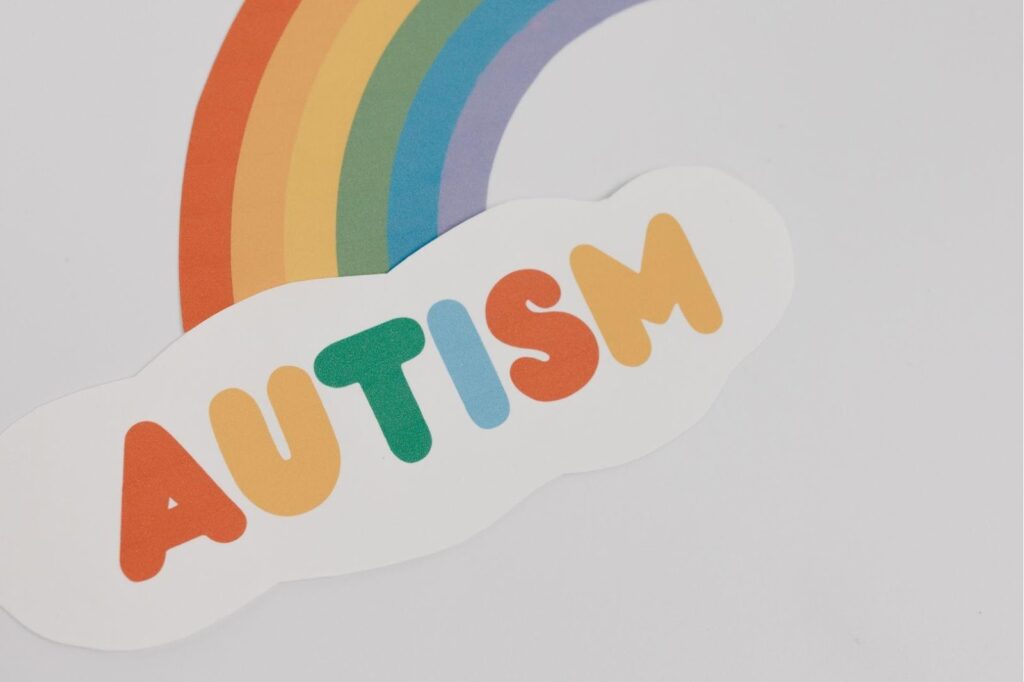Autism, a complex neurodevelopmental disorder, impacts millions worldwide, shaping their experiences and interactions. Discovering autism statistics and facts uncovers surprising insights into prevalence, diagnosis, interventions, and societal perceptions. Let’s dive into these statistics for greater inclusivity and understanding.
How Many People Have Autism?
- Global Prevalence: Autism spectrum disorder (ASD) affects an estimated 1 in 160 children globally, according to the World Health Organization (WHO).
- United States Prevalence: In the United States, the Centers for Disease Control and Prevention (CDC) reports that approximately 1 in 54 children has been identified with ASD.
- Increasing Rates: The prevalence of autism has been steadily increasing over the past few decades. This rise may be attributed to increased awareness, improved diagnostic criteria, and expanded access to services.
- Gender Disparities: Autism is diagnosed about four times more often in boys than in girls. However, this may partly reflect diagnostic biases, as girls with autism may exhibit different behavioral patterns that are sometimes overlooked.
- Age of Diagnosis: The average age of autism diagnosis is around four years old in the United States. Early intervention is crucial for improving outcomes, so efforts are ongoing to reduce the age of diagnosis and increase access to early screening and intervention services.
- Regional Variations: Prevalence rates of autism can vary significantly between regions and countries. Factors such as access to healthcare, cultural attitudes, and diagnostic practices contribute to these variations.
- Ethnic and Racial Disparities: There are disparities in the diagnosis and access to services among different ethnic and racial groups. Some communities may face barriers to receiving timely and accurate diagnoses, as well as culturally competent support services.
- Adult Diagnosis: While autism is often associated with childhood, it is a lifelong condition. Many individuals are diagnosed with autism later in life, sometimes not until adulthood, as awareness of the spectrum expands and people seek answers for long-standing challenges.
Key Autism Statistics and Facts

Statistic | Value |
Estimated global prevalence of autism | 1 in 160 children worldwide |
Average age of autism diagnosis | 4 years old |
Gender ratio (males to females) | 4:1 |
Annual cost of autism in the US | Over $268 billion |
Employment rate among autistic adults | Around 33% |
Percentage of autistic individuals with intellectual disabilities | Approximately 31% |
Average lifespan of autistic individuals | Around 36 years shorter than the general population |
Percentage of autistic individuals with co-occurring conditions | Over 70% |
Percentage increase in autism prevalence over the past decade | 10-17% |
Percentage of autistic individuals who are non-verbal | About 25% |
Percentage of autistic individuals who wander or bolt | Approximately 49% |
Percentage of autistic individuals who experience sensory processing differences | Over 90% |
Percentage of autistic individuals who are unemployed or underemployed | Around 80% |
Percentage of autistic individuals who have been bullied | Over 60% |
Percentage of autistic individuals who are diagnosed with epilepsy | About 20% |
Percentage of autistic individuals who experience anxiety disorders | Up to 40% |
Percentage of autistic individuals who have sleep disorders | Approximately 50-80% |
Percentage of autistic individuals who are diagnosed with ADHD | Around 30% |
Percentage of autistic individuals who have gastrointestinal issues | Approximately 46% |
Percentage of autistic individuals who are diagnosed with depression | Over 30% |
Impact of Early Intervention on Autism
Early intervention plays a crucial role in supporting individuals on the autism spectrum and improving their quality of life. Research shows that timely interventions can lead to significant improvements in various areas of development, including communication, social skills, and behavior management. Here’s a closer look at the impact of early intervention on autism:
- Improved Developmental Outcomes: Studies indicate that children who receive early intervention services show better developmental outcomes compared to those who do not. These outcomes may include improved language skills, increased social engagement, and enhanced adaptive behaviors.
- Enhanced Socialization Skills: Early intervention programs often focus on teaching social skills and promoting social interactions. Through structured activities and targeted interventions, children with autism can learn how to navigate social situations more effectively and develop meaningful relationships with peers and family members.
- Better Behavior Management: Early intervention strategies aim to address challenging behaviors commonly associated with autism, such as tantrums, aggression, and repetitive behaviors. By implementing behavior modification techniques and teaching alternative coping strategies, caregivers can help children with autism manage their behaviors more effectively.
- Greater Independence: Early intervention services are designed to promote independence and autonomy in individuals with autism. By targeting skills such as self-care, problem-solving, and decision-making, these programs empower individuals to become more self-sufficient and engage more fully in daily activities.
- Increased Educational Opportunities: Early intervention can pave the way for smoother transitions into educational settings, enabling children with autism to access appropriate academic support and accommodations. By addressing learning challenges early on, individuals are better equipped to succeed in school and pursue their academic goals.
- Long-term Benefits: The benefits of early intervention extend beyond childhood and can have lasting effects into adolescence and adulthood. Research suggests that early intervention can mitigate the long-term impact of autism-related challenges and promote better outcomes in areas such as employment, independent living, and community integration.
What Percentage of The Population Has Autism Spectrum Disorder?

Autism affects a significant portion of the population worldwide, with prevalence rates varying across different regions and demographics. According to recent estimates, approximately 1 in 160 children globally is diagnosed with autism spectrum disorder (ASD). This prevalence underscores the importance of understanding and addressing the needs of individuals on the autism spectrum, as well as supporting their families and communities.
| Population | Percentage of people with Autism |
| Global | 1 in 160 children |
| United States | 1 in 54 children |
| Europe | 1 in 100 children |
| Australia | 1 in 70 children |
| Asia | 1 in 132 children |
What Percentage of the World has Autism

Race/Ethnicity and Autism Prevalence
Autism spectrum disorder (ASD) prevalence rates vary across different racial and ethnic groups. According to data on autism prevalence in 8-year-olds from 2018:
- White: 21.2 per 1,000 (2.1%)
- Black: 22.3 per 1,000 (2.2%)
- Asian/Pacific Islander: 22.2 per 1,000 (2.2%)
- Hispanic: 22.5 per 1,000 (2.3%)
- Overall: 23.0 per 1,000 (2.3%)
What percent of the world is autistic statistics highlight is that autism affects individuals across all racial and ethnic backgrounds, emphasizing the importance of considering diversity when addressing the needs of individuals on the autism spectrum and supporting their communities.
Autism Rates by Year: Understanding the Numbers

Exploring the prevalence of autism spectrum disorder (ASD) over time provides valuable insights into its impact on society. Let’s delve into the precise percentages of autism rates across different years.
Historical Perspective:
- Early recognition and diagnosis of autism were limited, possibly resulting in underestimated rates.
- Exact percentages were challenging to ascertain due to varied diagnostic criteria and awareness.
Late 20th Century:
- By the late 20th century, autism rates began to increase noticeably.
- Precise percentages during this period are difficult to determine, but a noticeable uptick in diagnoses was observed.
21st Century:
- Throughout the 21st century, autism rates have continued to rise steadily.
- Approximations suggest percentages ranging from around 0.6% to 1.7% of the population, depending on the region and study.
Recent Trends:
- Recently, what percent of the world has autism indicates that autism affects approximately 1-2% of children globally.
- These numbers reflect improved awareness, better diagnostic tools, and increased acceptance.
Factors Influencing Rates:
- Diagnostic criteria and practices evolve, affecting reported percentages.
- Greater awareness leads to more parents seeking evaluations for their children.
- Environmental and genetic factors may contribute to variations in prevalence rates.
Conclusions:

The realm of autism statistics and facts unveils a multifaceted landscape that demands attention, understanding, and support. With approximately 1 in 160 children globally and 1 in 54 children in the United States diagnosed with autism spectrum disorder (ASD), the prevalence of autism underscores the importance of addressing the diverse needs of individuals on the spectrum and their communities.
Furthermore, disparities in diagnosis rates among different racial and ethnic groups emphasize the significance of considering diversity in providing support and services. The rise in autism prevalence over the past few decades highlights the impact of increased awareness, improved diagnostic criteria, and expanded access to services.
Early intervention emerges as a crucial factor in improving developmental outcomes, socialization skills, behavior management, and overall quality of life for individuals with autism. By investing in early screening, diagnosis, and intervention services, we can strive for greater inclusivity, support, and appreciation for the diversity of individuals on the autism spectrum.
In essence, by fostering understanding, empathy, and advocacy, we can work towards building a more inclusive and supportive society for individuals with autism and their families.

